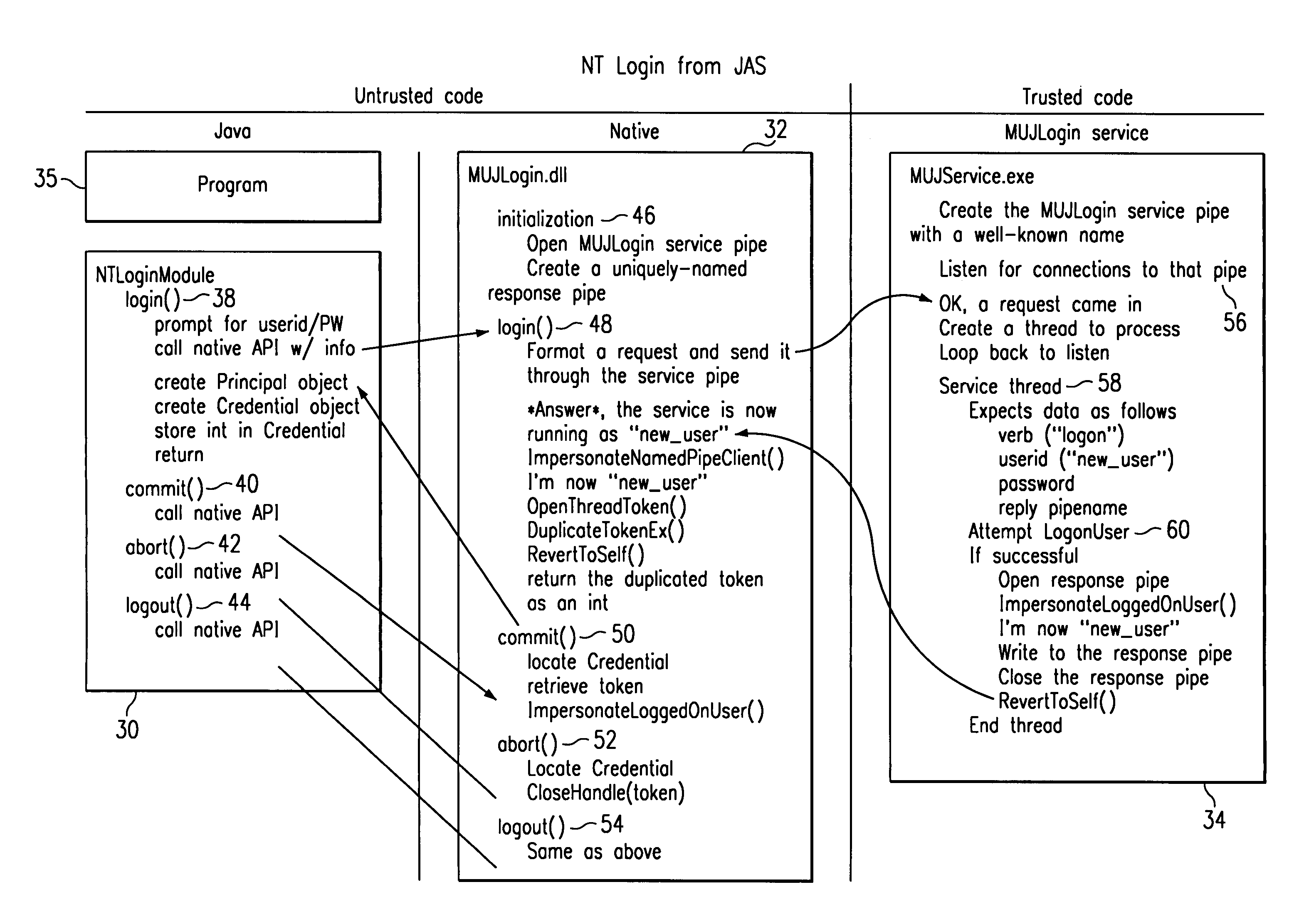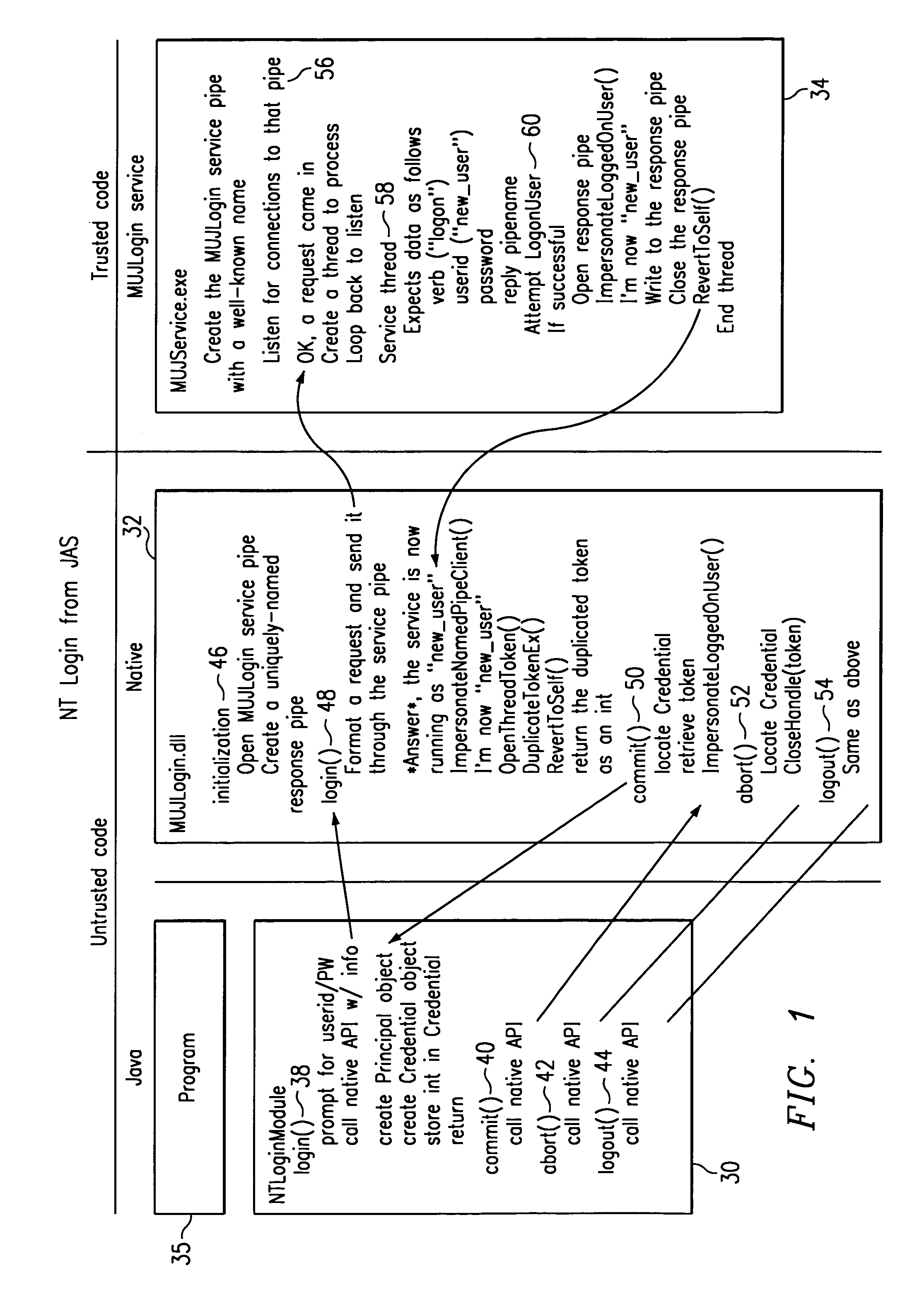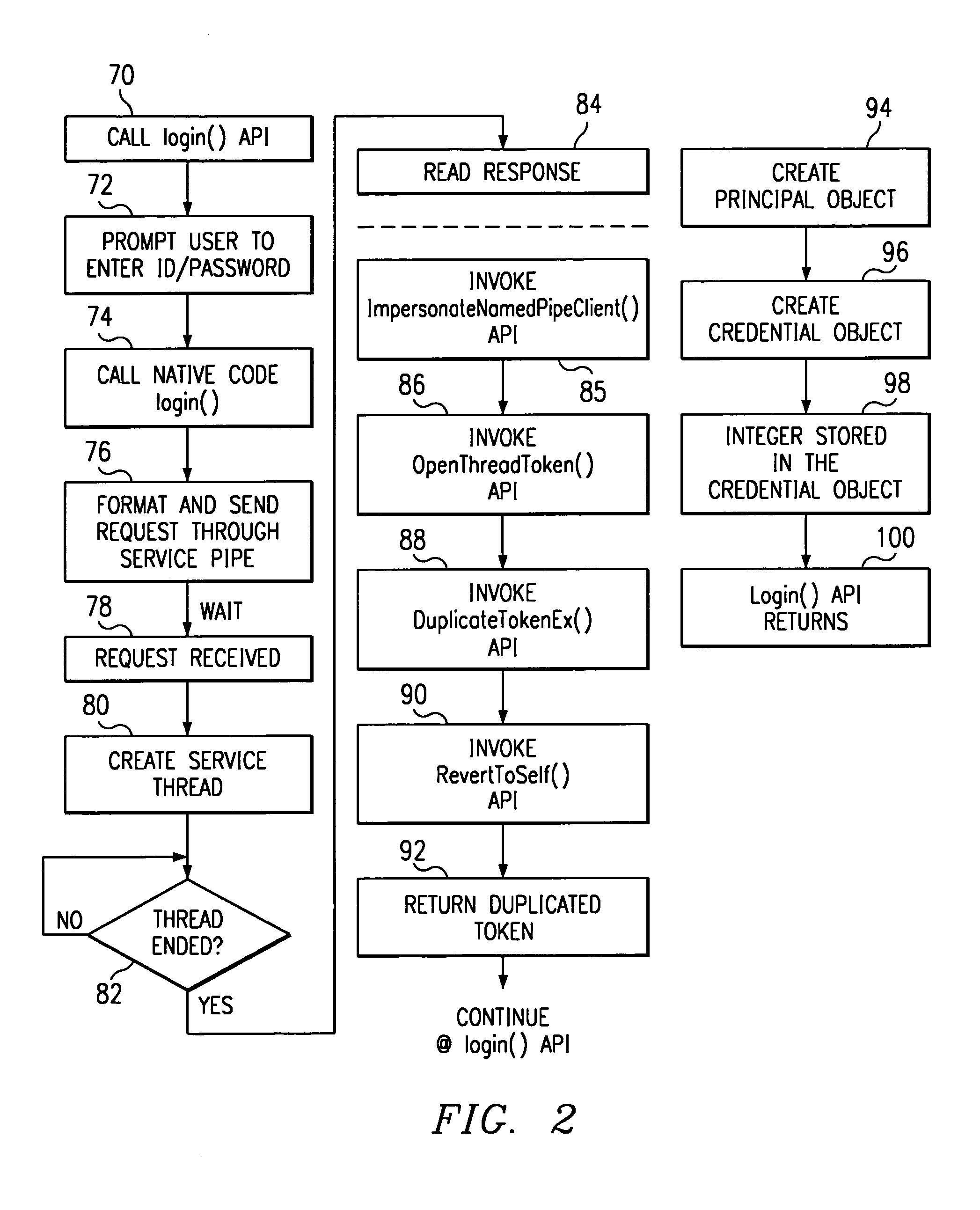Method for enabling a program written in untrusted code to interact with a security subsystem of a hosting operating system
a technology of hosting operating system and security subsystem, which is applied in the direction of memory system, unauthorized memory use protection, instruments, etc., can solve the problems of not being able to allow java programs to access nt operating system resources, and not being able to implement user authentication from non-native server domains
- Summary
- Abstract
- Description
- Claims
- Application Information
AI Technical Summary
Benefits of technology
Problems solved by technology
Method used
Image
Examples
Embodiment Construction
[0024]As described above, the present invention enables a JAVA program to access a WINDOWS NT operating system resource under the identity of the person running the JAVA program. Although not meant to be limiting, the invention may be implemented in a Web application server running JAVA-based programs. As will be seen, the invention allows the server to run each JAVA program as a separate thread and to have each thread run as a different WINDOWS NT user. To this end, it is assumed that each JAVA program (or each user thereof) must perform a WINDOWS NT login from a JAVA-based authentication service. The present invention preferably is implemented underneath or “under the covers” as this WINDOWS NT login takes place.
[0025]FIG. 1 illustrates the operating environment in which the present invention may be implemented. As will be described, there are three (3) main functional components that are used to enable WINDOWS NT login from a JAVA-based authentication service. In particular, ther...
PUM
 Login to View More
Login to View More Abstract
Description
Claims
Application Information
 Login to View More
Login to View More - R&D
- Intellectual Property
- Life Sciences
- Materials
- Tech Scout
- Unparalleled Data Quality
- Higher Quality Content
- 60% Fewer Hallucinations
Browse by: Latest US Patents, China's latest patents, Technical Efficacy Thesaurus, Application Domain, Technology Topic, Popular Technical Reports.
© 2025 PatSnap. All rights reserved.Legal|Privacy policy|Modern Slavery Act Transparency Statement|Sitemap|About US| Contact US: help@patsnap.com



